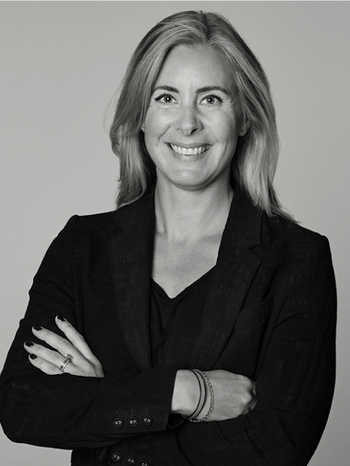Yves Klein
"Untitled Blue Monochrome (IKB 154)"
According to label verso by Mme Rotraut Klein-Moquay, signed Yves and dated 59. Also signed with the artist's star monogram. Dry pigment and synthetic resin on gauze laid down on panel 14 x 18 cm. Plexi glass box 29 x 24.6 x 5.6 cm.
Provenance
Michel Couturier & Cie, Paris.
Private Collection, Stockholm.
Literature
Paul Wember, "Yves Klein", 1969, p. 74, no. IKB 154.
More information
Yves Klein (1928-1962) was one of the leading figures of the Neorealism art movement and is best known today for his Klein blue objects. During his all-too-brief life, he was also a pioneer of performance art, the most subversive art movement after Cubism.
He conquered the azure sky by simply claiming to have invented its colour, International Klein Blue (IKB), which he did in 1957. In a 1959 lecture at the Sorbonne, Klein said that the blue monochromes are recognisable and similar in appearance, yet unique and different from each other.
Klein used the blue colour as a means to capture immateriality and infinity. His celebrated, more-blue-than-blue hue, radiates colourful waves of blue that propagate through his oeuvre. Klein's innovative and almost spiritual art form broke down boundaries between conceptual art, sculpture, painting and performance. His works, deeply characterised by the dualism between action and ritual, continue to influence and fascinate art lovers worldwide.
He set out on his ‘adventure into monochrome’, influenced by Japanese philosophy and art. By combining the rigor and discipline of judo with the free and provocative expression of art, Klein wanted to ‘liberate colour from the prison of lines’. One interpretation of what drove Klein was the ‘allness’. To be able to embrace and own the beautiful.
Klein was initially a dedicated practitioner of the martial art of judo. He received his black belt at the age of 24 from the Kôdôkan Institute in Tokyo in 1952. He was the only Westerner to achieve such a level of discipline and skill at the time. Klein continued his passionate career as a practitioner of judo, teaching at the Spanish Judo Federation in Madrid, writing the book ‘Le Fondements du Judo’ (The Foundations of Judo), and opening his own judo school in Paris. It was only then, back in Paris in 1954, that he began to devote himself wholeheartedly to his second passion in life: art.
Between May 1954 and June 6, 1962, the date of his death, Yves Klein dedicated his life to groundbreaking art that marked his era and still captivates audiences today.
Photo: Frank Hudson/ANL/REX, Yves Klein, 1957.






























